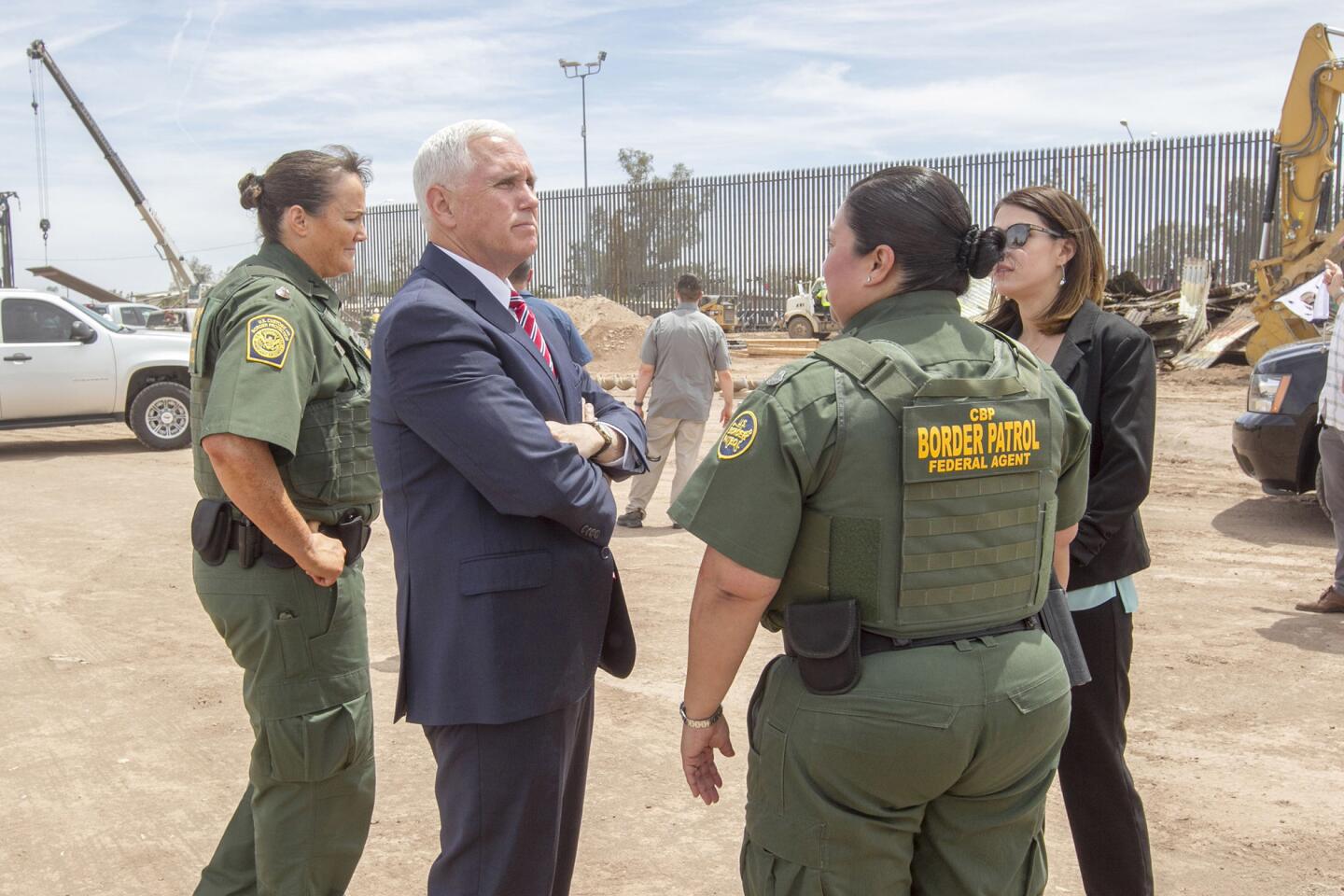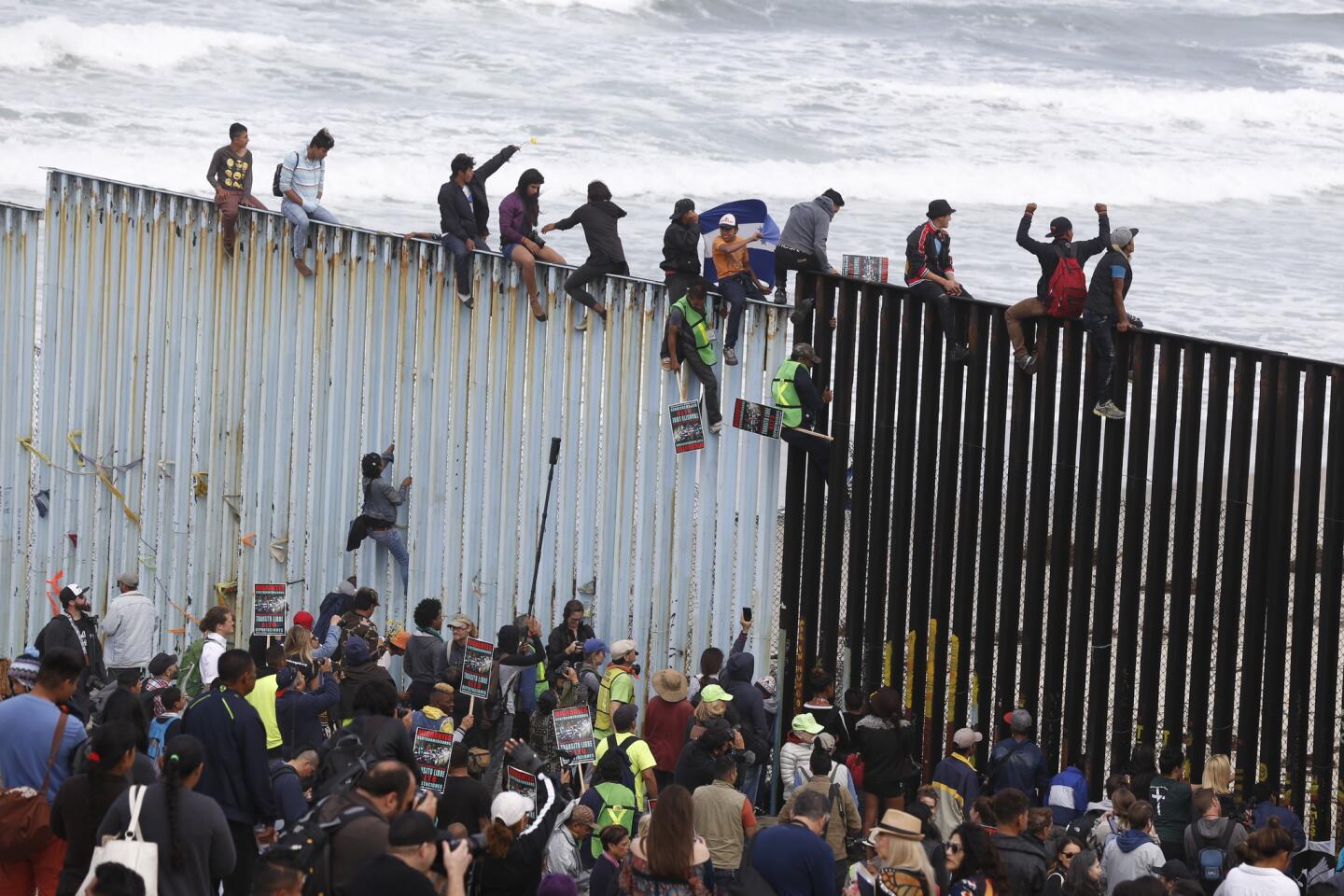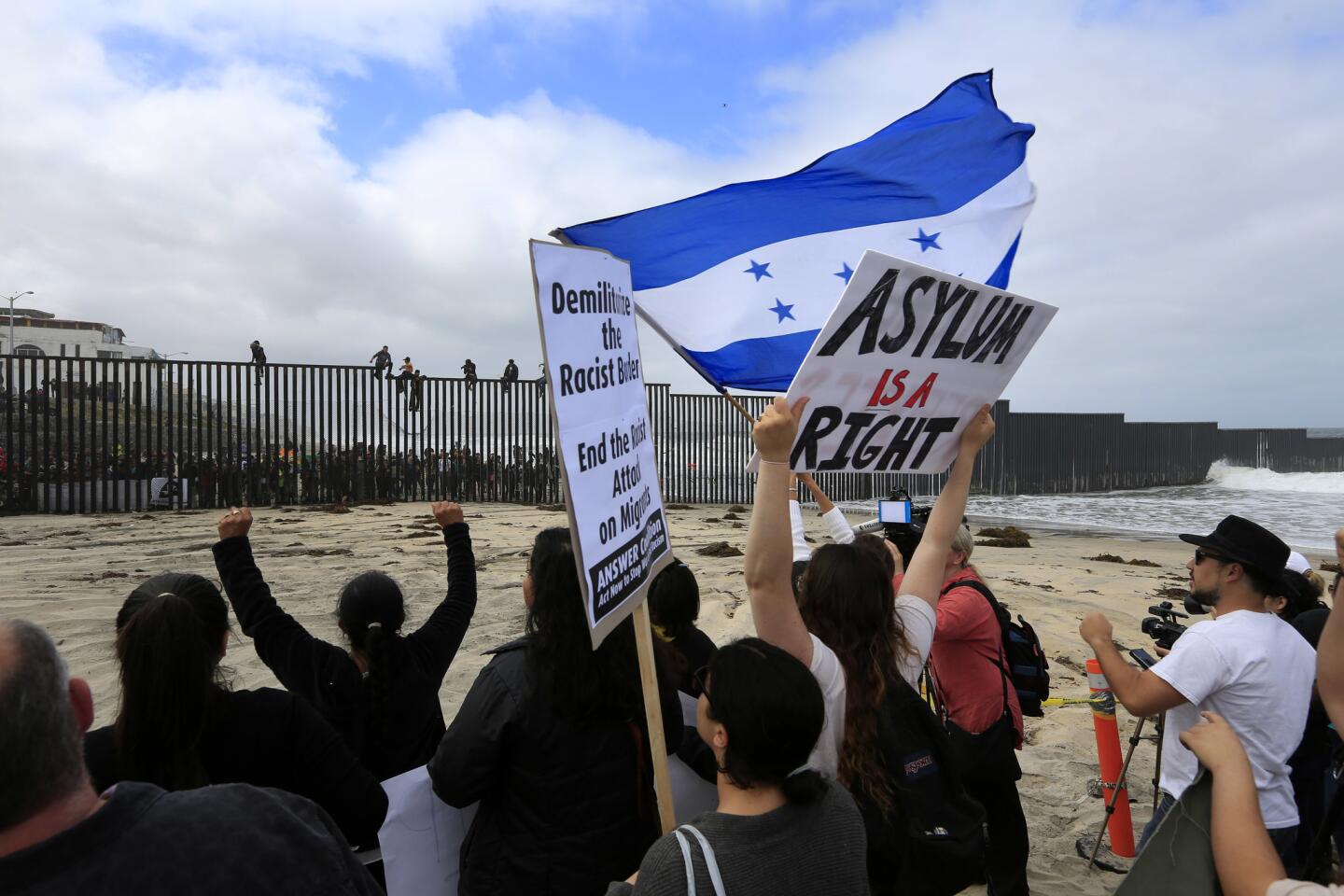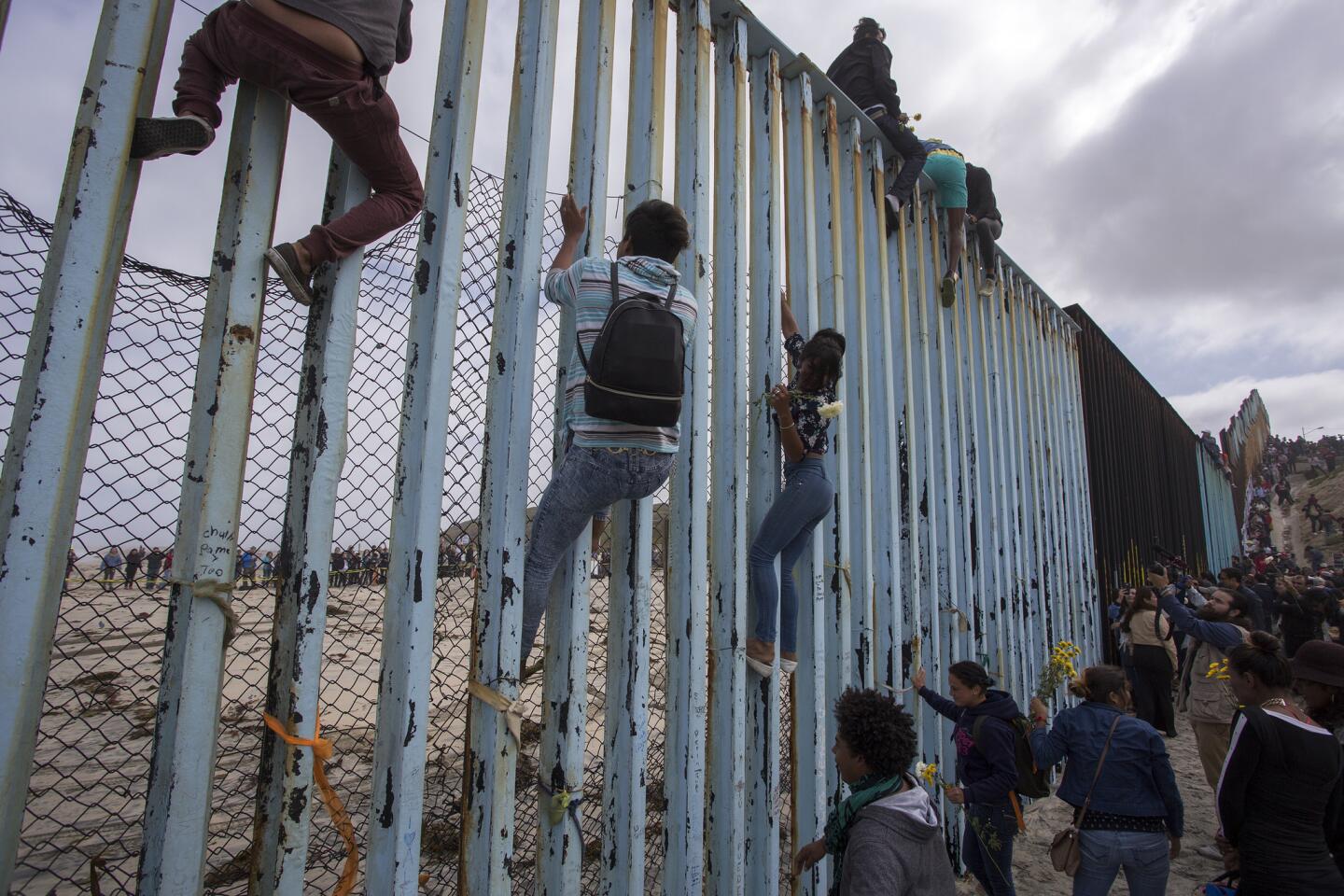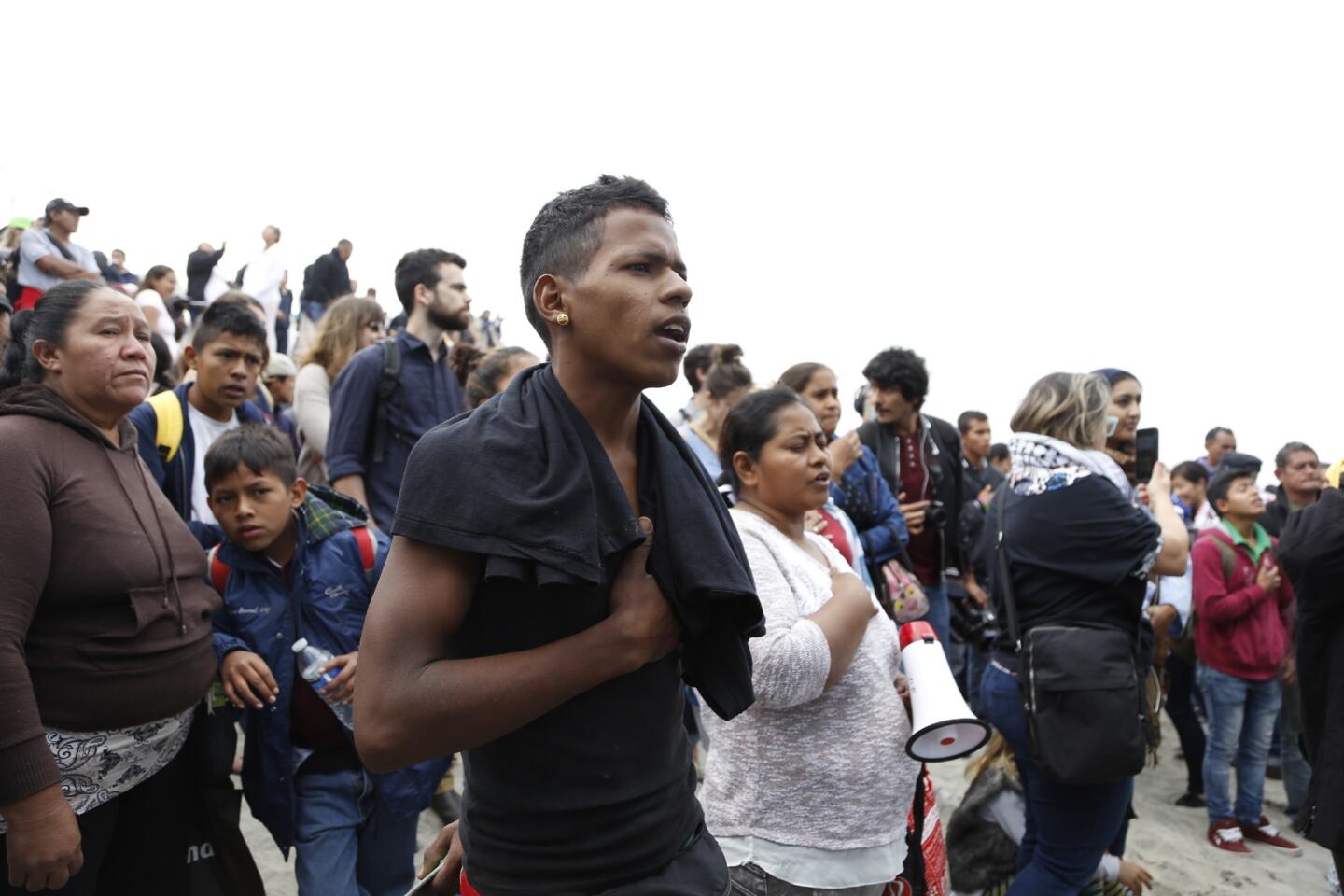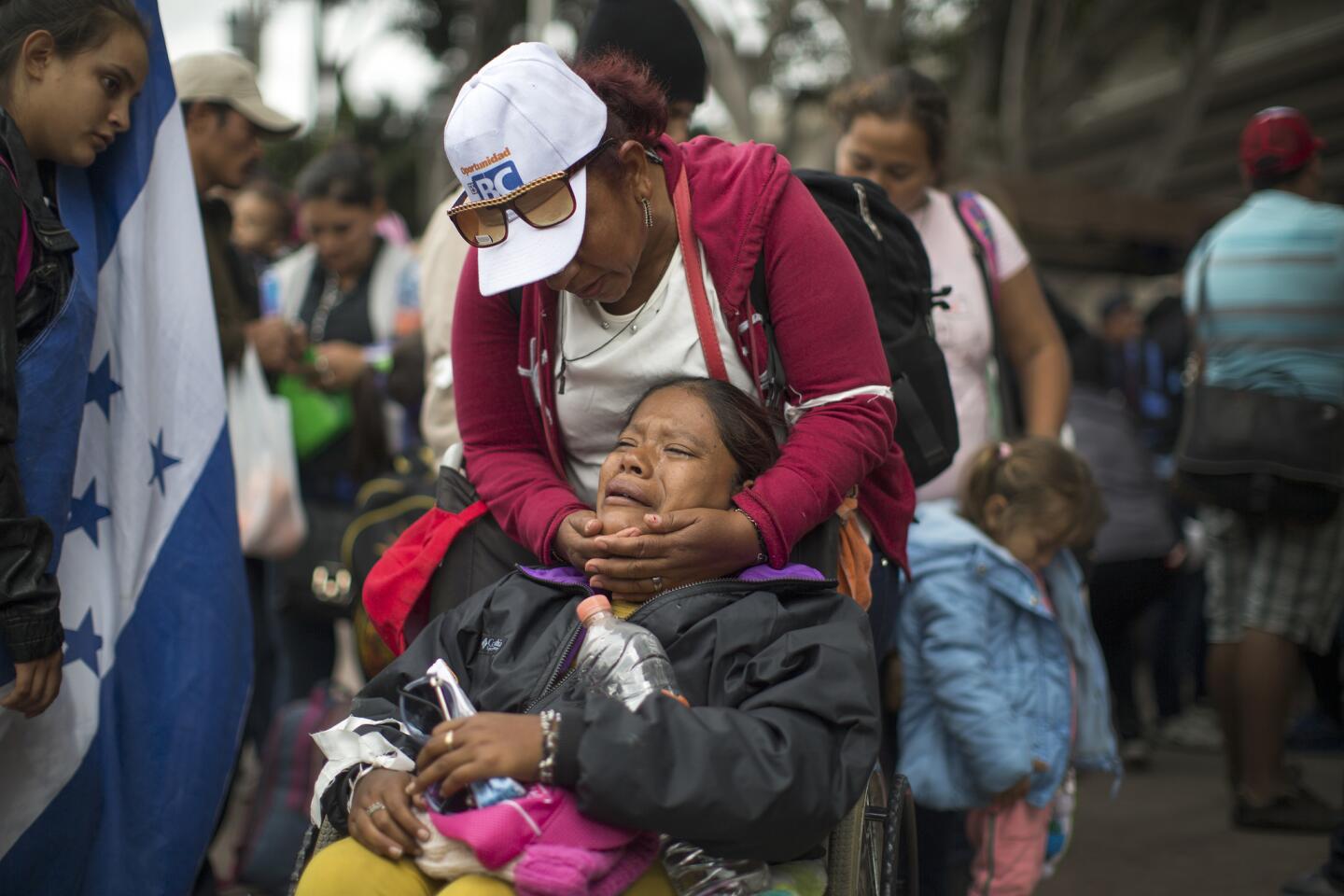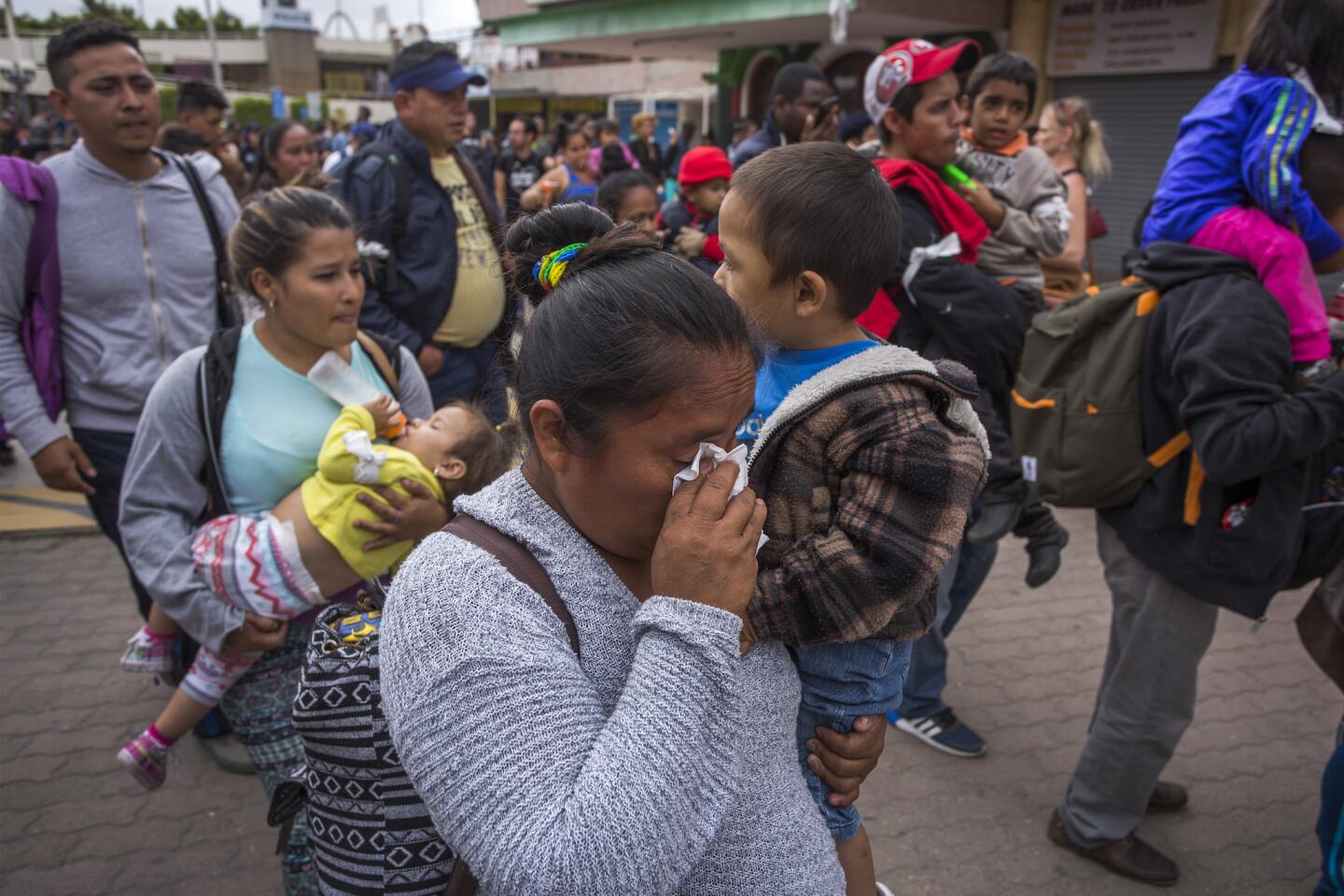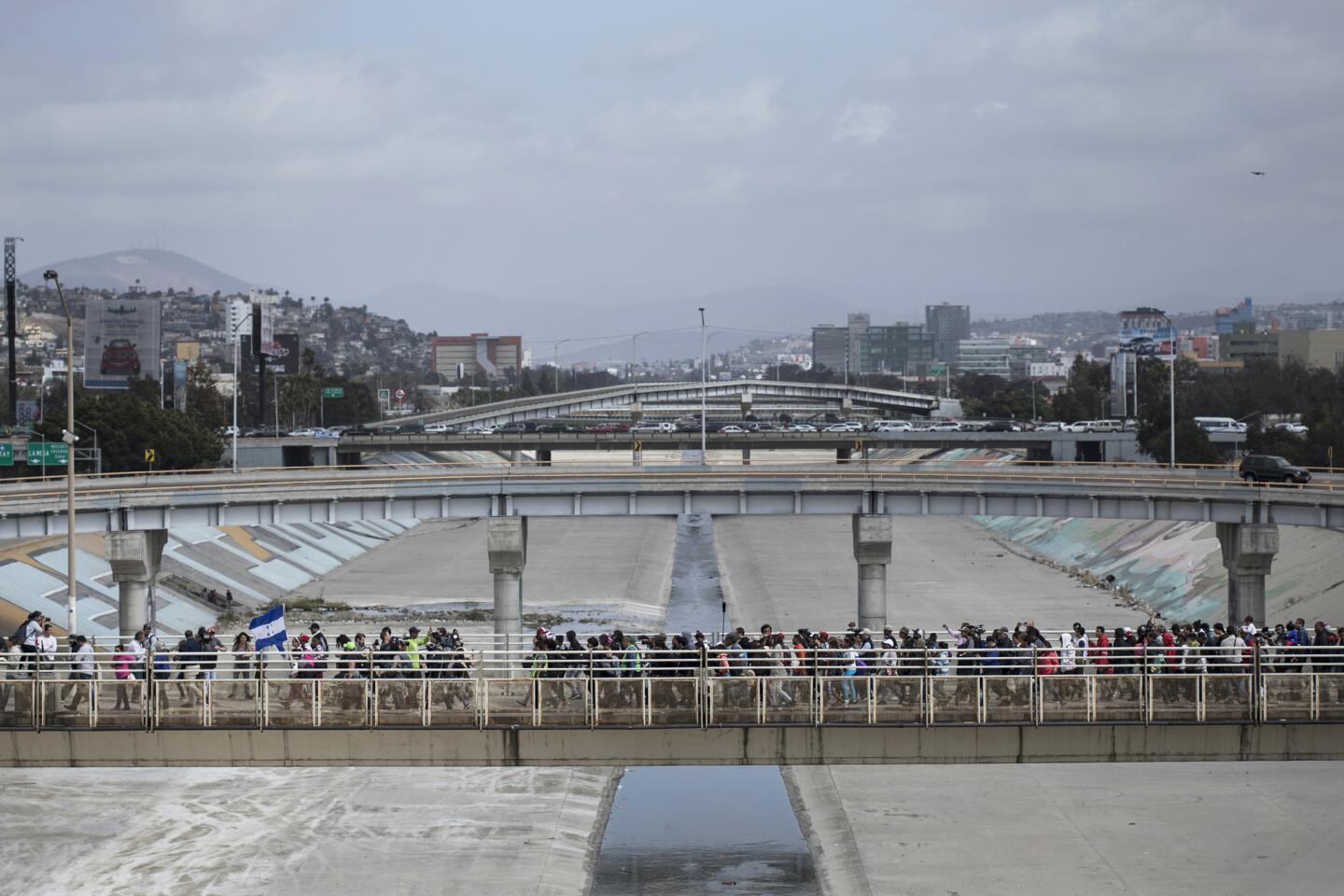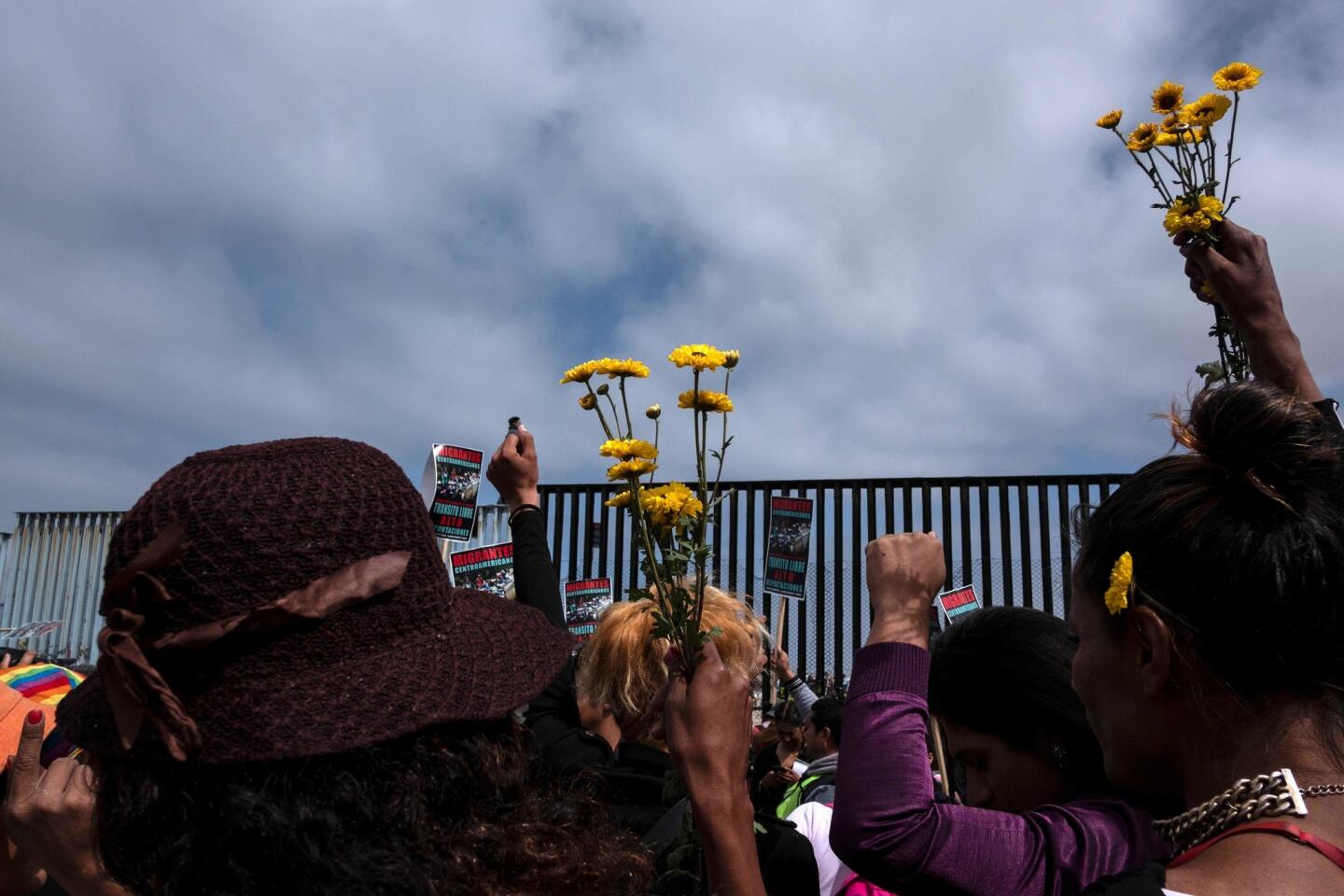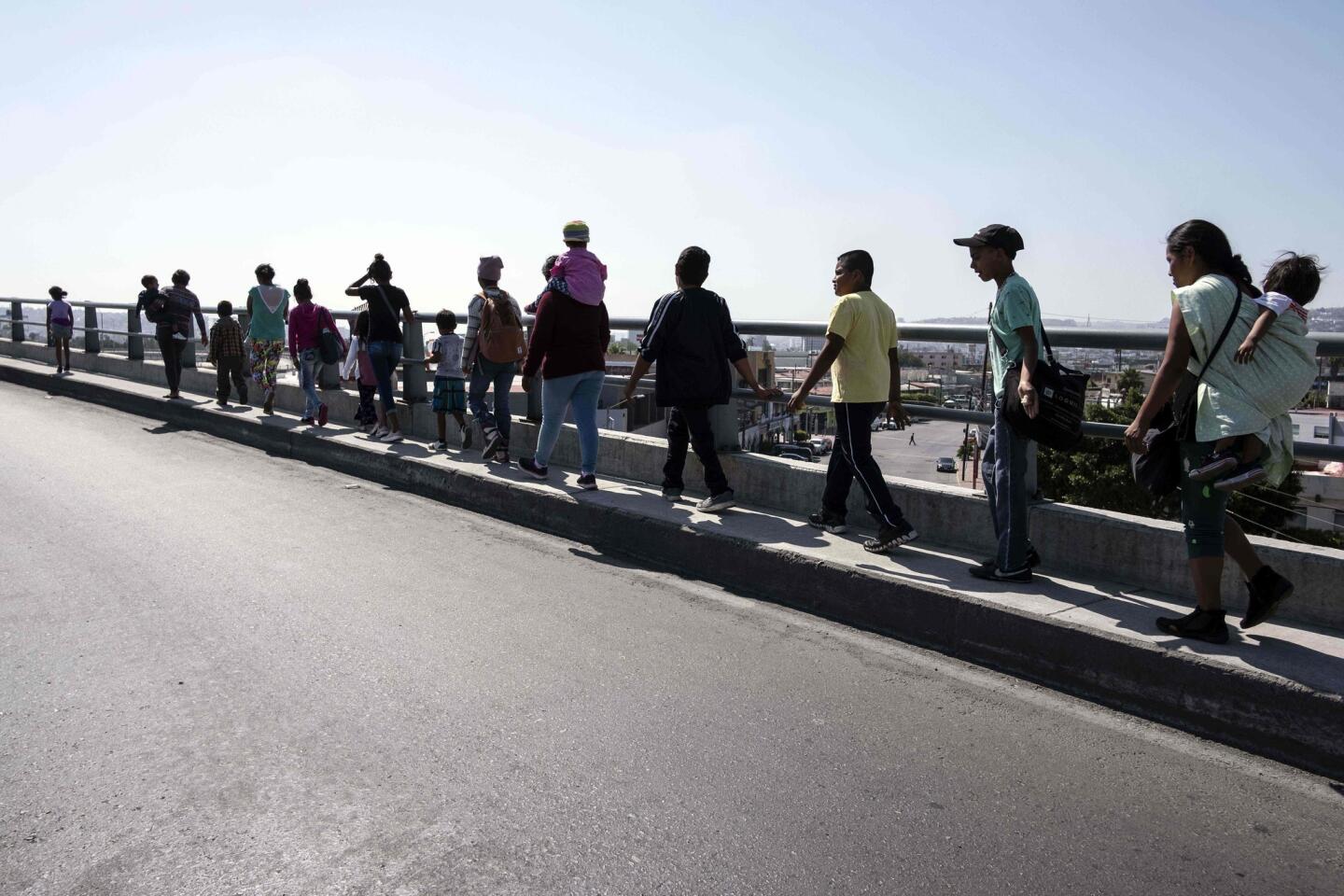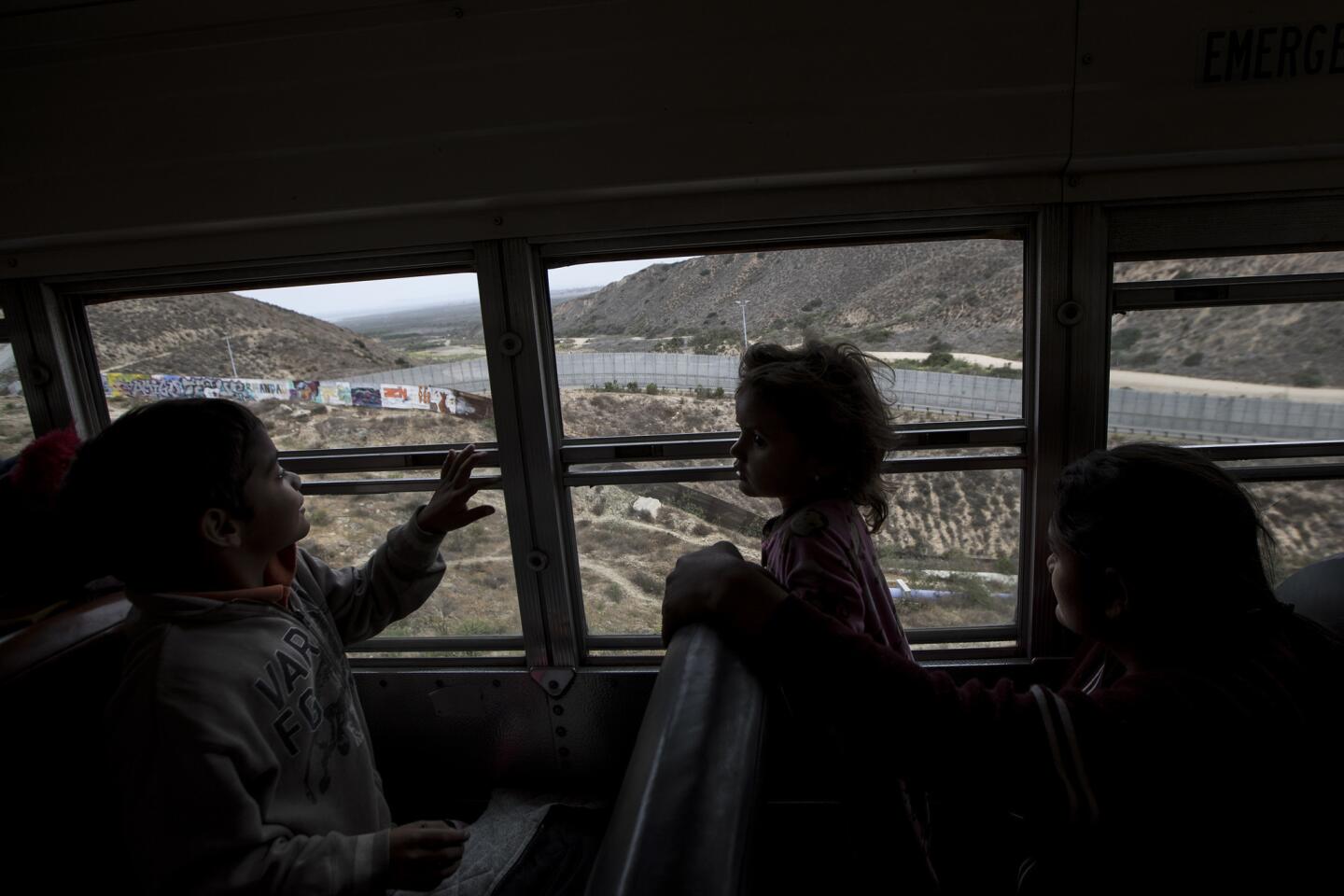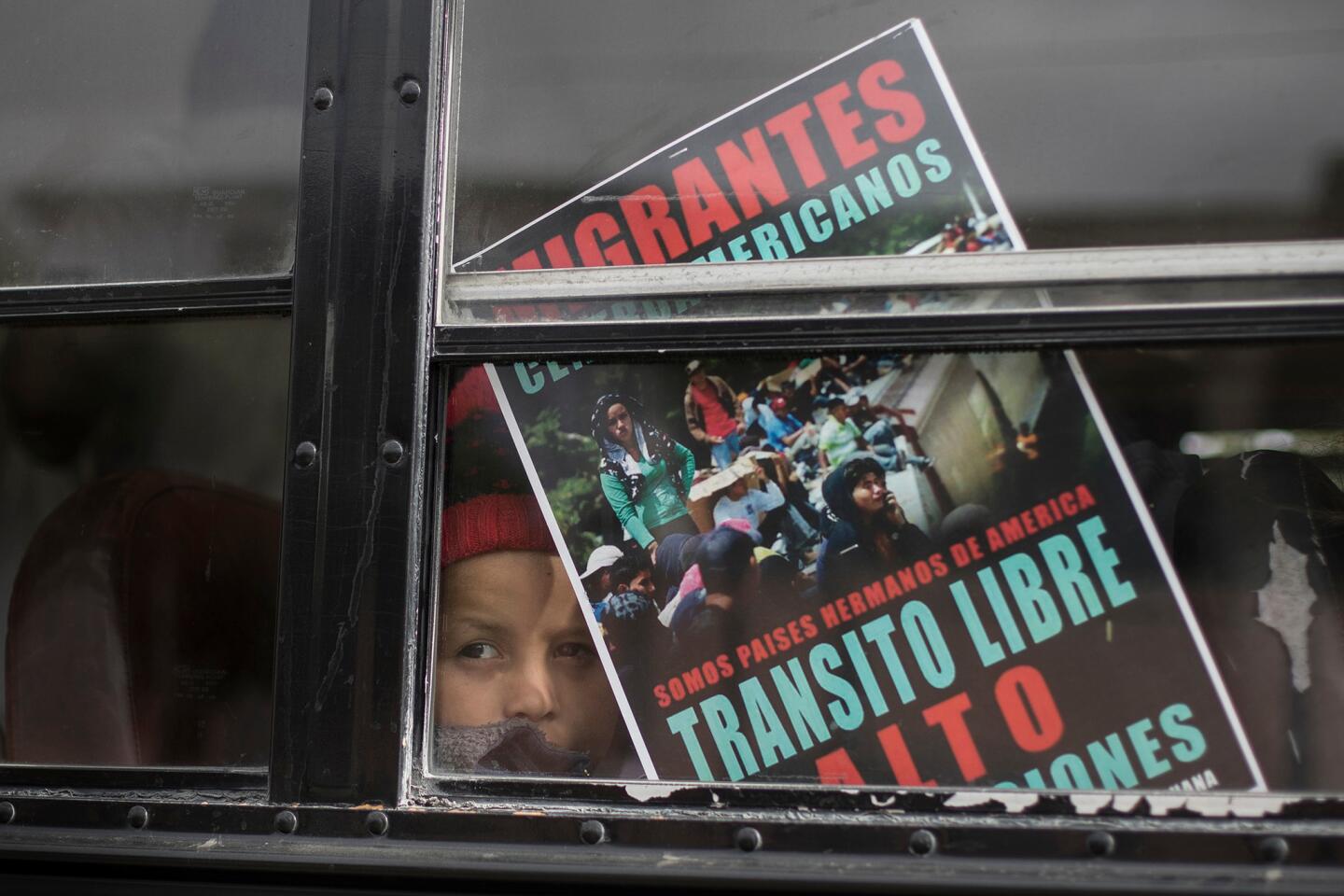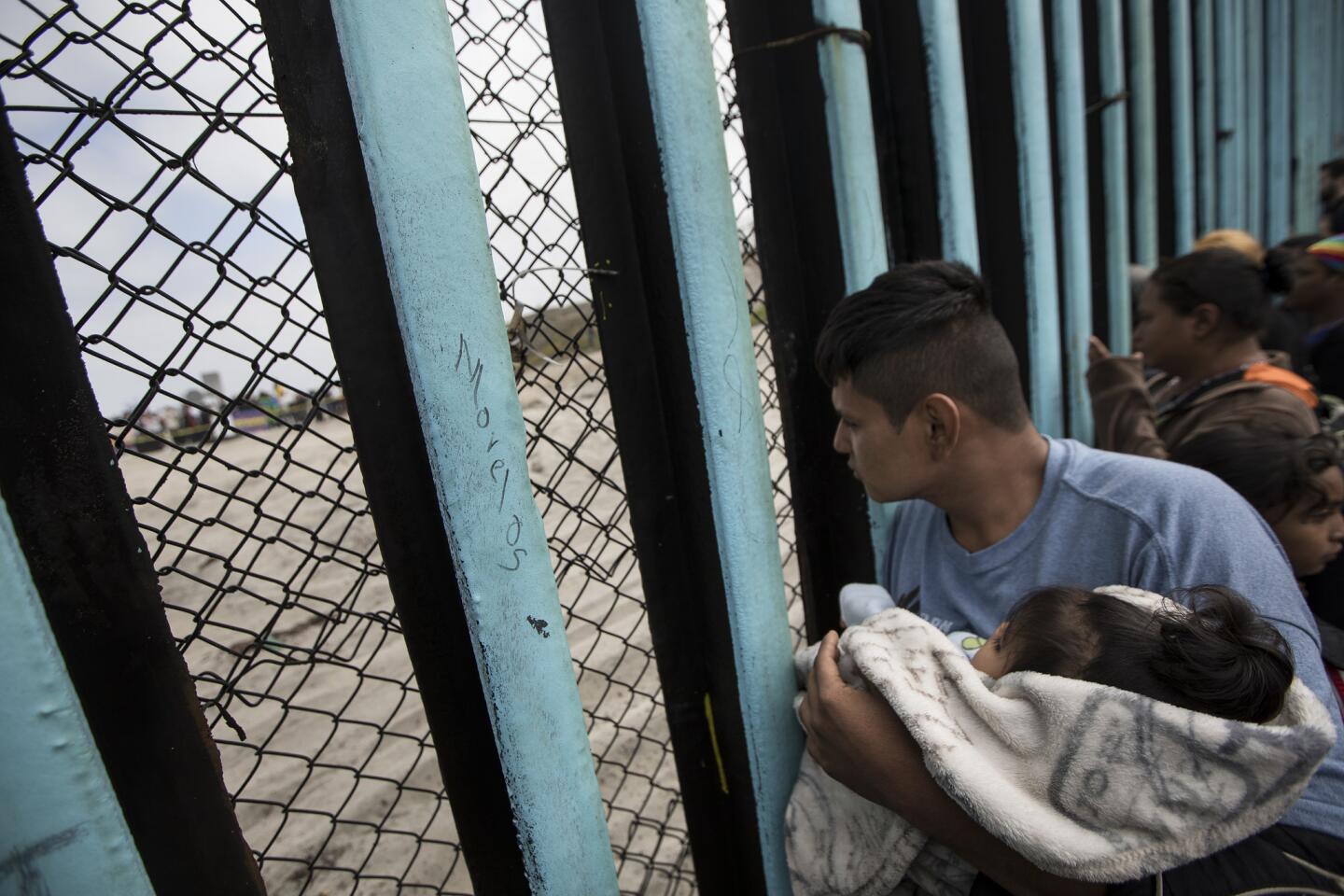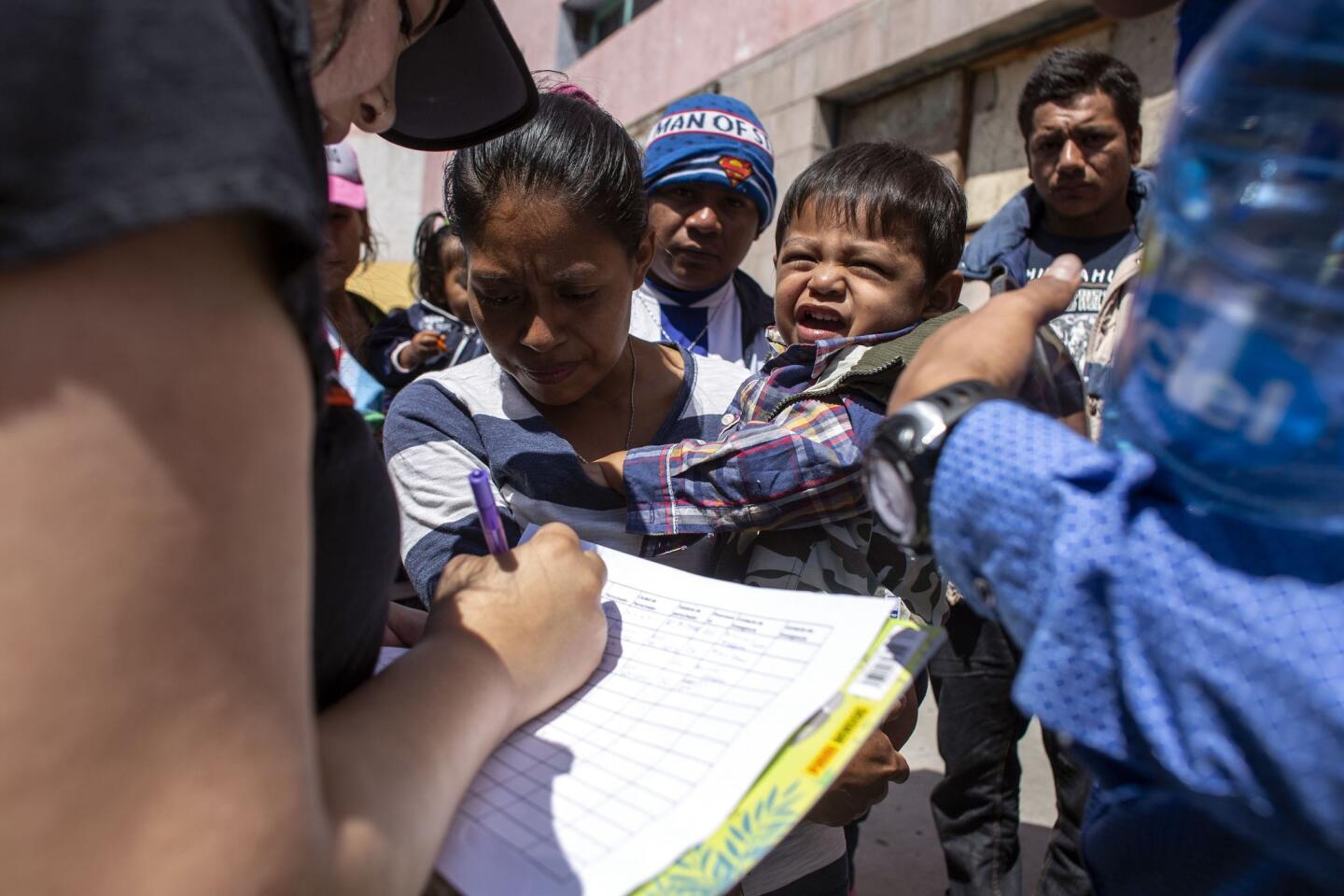Dozens of Central Americans seek asylum at U.S. border today
- Share via
Reporting from Tijuana — As they prepared to present themselves at the San Ysidro Port of Entry today, a group of asylum seekers from Central America gathered at the border fence in Playas de Tijuana early Sunday cheered on by supporters on both sides of the border.
The boisterous gathering grew to hundreds, with some waving Honduran flags, calling out chants, waving bouquets of yellow flowers, and some of the younger members climbing to the top of the tall metal bollards. Others sat quietly, clutching infants, wondering what awaited them in U.S. custody.
It wasn’t until 4:30 p.m. when the first group of 50 members of the Pueblo Sin Fronteras Caravan, mostly women and children, walked into the San Ysidro Port of Entry, accompanied by attorneys and activists.
But their fate was far from certain: U.S. Customs and Border Protection announced just two hours earlier that staff would be unable to process anyone “without appropriate entry documentation,” which includes all caravan members.
“Depending upon port circumstances at the time of arrival, those individuals may need to wait in Mexico as CBP officials work to process those already in our facilities,” according to the statement issued by Kevin McAleenan, commissioner of U.S. Customs and Border Protection. “As sufficient space and resources become available, CPB officers will be able to take additional individuals into the port for processing.”
The Central Americans would not be the first group to be forced to wait in Mexico. When thousands of Haitians sought entry at San Ysidro in 2016, CBP worked with Mexican officials to accept limited numbers each day so as not to overwhelm the port’s processing capacity.
By foot, bus and train, the caravan participants have been journeying through Mexico since leaving the southern border city of Tapachula on March 25 with the aim of reaching the Tijuana-San Diego border. Most are from Honduras, and tell of gang violence and extortion back home.
On Saturday, as they lingered near the U.S. border at Plaza Viva Tijuana, many appeared weary and ready to move on.
Reina Isabel Rodriguez, 52, had traveled from El Salvador with her two grandchildren. “I fear that they will separate me from them,” she said.
She is among dozens of the Pueblo Sin Fronteras Caravan seeking asylum from the U.S. government — undeterred by fierce criticism from President Trump.
But some members may have to remain in Tijuana for a while longer before they can be processed by U.S. authorities at the San Ysidro Port of Entry, according to U.S. Customs and Border Protection.
Pete Flores, director of field operations in San Diego for the agency, said on Saturday that “depending on port circumstances at the time of arrival, individuals may need to wait in Mexico as CBP officers work to process those already within our facilities.”
Those expected to ask for asylum are a small percentage of a traveling group that at one point swelled to more than 1,700 members, according to organizers. They said that about 400 caravan participants, many of them women and children, had completed the journey to Tijuana, and some small groups already began surrendering at the San Ysidro Port of Entry in recent days.
David López was among dozens pondering their next move on Saturday afternoon. López, 25, who until recently worked on the staff of an elementary school, said “organized crime and our country’s government” had prompted him to flee the Copan area of Honduras with his wife and their 3-year-old daughter.
Mother and child had presented themselves at San Ysidro Port of Entry 10 days ago, but López remained behind. He said his wife and their daughter have been released from custody while their asylum claim is under review and are staying with family in South Carolina.
Today’s group is expected to be the largest and most public of this caravan to approach U.S. border officials, though exactly how many will seek asylum was not known.
On Friday and Saturday, the caravan members met at different locations near the border with volunteer attorneys who listened to their claims and offered counseling, “so that people really know what they’re getting into,” said Nicole Ramos, who has worked closely with asylum applicants.
Similar caravans for years have been taking place as a way of keeping Central Americans safe from criminal gangs and corrupt officials as they travel through Mexico hoping to make it to the U.S. border.
But this caravan is one of the largest — and by far the most visible, following a series of tweets by Trump complaining that Mexico is doing little to stop them from reaching the U.S. border.
“This is not ideal for us to have this many people, this much publicity,” said Irineo Mujica, leader of the advocacy group Pueblo Sin Fronteras, or People Without Borders, which coordinated the caravan. But “it’s been really really good that we are able to see what is the problem,” the violence that is causing so many to abandon their homes and come to the U.S. border.
Still, some migrant advocates have questioned the benefits brought by the caravan. “We don’t think it’s a really good move,” said the Rev. Patrick Murphy, who heads the Catholic-run Casa del Migrante in Tijuana, a 120-bed shelter that overlooks the city. “What happens to those people who have made this journey for quite a few weeks now, and they get rejected, or worse yet, they don’t even get their asylum cases heard?”
In a statement last week, U.S. Homeland Security Secretary Kirstjen Nielsen, said that the department has been “closely monitoring” the remnants of the caravan. She said the department “encourages persons with asylum or other similar claims to seek protections in the first safe country they enter, including Mexico.”
But Maureen Meyer of the Washington Office on Latin America, a human rights advocacy group, said that “it’s naive to think that most of the Central Americans will want to request asylum in Mexico.”
Although Mexico “has increased its capacity to process and screen potential asylum seekers, it still has a long way to go,” she said. “With widespread kidnappings, theft, sexual assaults and other crimes against migrants in Mexico, it is hard to think that Central Americans will view Mexico as a place they want to settle.”
Early Sunday there were about 80 caravan supporters just north of the border at Friendship Park, but an anti-caravan group, called San Diegans for Secure Borders, was expected to protest.
Dibble writes for the San Diego Union-Tribune.
sandra.dibble@sduniontribune.com
UPDATES:
6:05 p.m.: This article was updated with more comments from a U.S. Customs and Border official.
1:30 p.m.: This article was updated with new comments from members of the caravan.
This article was originally posted at 12:20 p.m.
More to Read
Sign up for Essential California
The most important California stories and recommendations in your inbox every morning.
You may occasionally receive promotional content from the Los Angeles Times.
